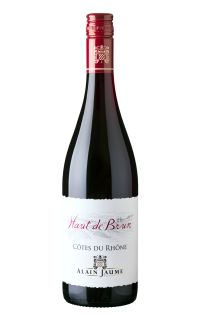The history of the classical French wine label of Alain Jaume dates back to 1826. This was the time when the Jaume family started growing vines in the fertile Chateauneuf du Pape and making exotic wines from the fruits they grew. The wines created under the Alain Jaume label speak of the passion and the commitment that the Jaume family exhibited to create one of the best wines from this region. The rich, complex and intense wines created by them are true representations of the fertile Rhone Valley, where the grapes are grown.
The grapes are grown over 90 hectares of vineyards, out of which, 36 are found in Cotes de Rhone, 28 in Lirac Clos de Sixte, 10 in Vacqueyras Chateau Mazane and 6 in Chateauneuf-du-Pape. Some of the most common grapes used by this label for its wines are Grenache Noir, Syrah, Mourvedre, Clairette, Roussanne and Viognier. Since each of these fruit types has a distinct aroma and character, they are harvested and vinified separately.
The red wines are kept underground at a temperature of 15 degrees Celsius, for a year or so. However, for fermenting purposes, each red grape varietal is treated differently. Thick, concrete tanks are used for the Grenache Noir, whereas French oak barrels are used for maturing reds like Syrah and Mourvedre. Concrete material helps to retain the aromas of the Mourvedre and the French oaks help to maintain the high tannin content of the Syrah and Mourvedre.
Organic winemaking techniques are followed in vineyards such as Domaines Grand Veneur, Clos de Sixte and Chateau Mazane. Maintaining low yields at all times, hand-harvesting methods and allowing for natural aeration of the vine branches are some organic viticultural practices followed in the wineries here. Thanks to these methods, the red wines of Chateauneuf du Pape are considered as one of the best wines for ageing in this region.
http://vignobles-alain-jaume.com
Find out more

















